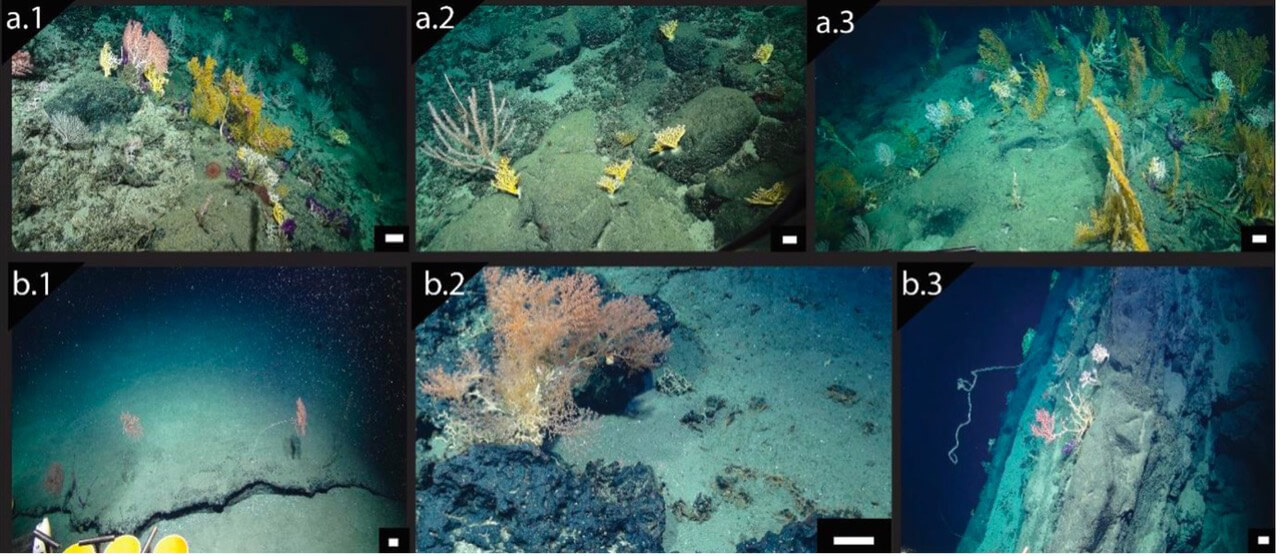Nansen’s first scientific survey in 2022 is taking the research vessel – Dr Fridtjof Nansen – to survey a number of selected seamounts of the Sierra Leone Rise, in areas beyond national jurisdiction (ABNJ), within the area of the Fishery Committee for the Eastern Central Atlantic (CECAF). During the month-long survey (postponed from 2020 due to the COVID-19 pandemic), the expedition team will investigate seabed habitats, and in particular document the presence and distribution of Vulnerable Marine Ecosystems (VMEs), such as sponge aggregations, cold-water coral reefs and coral gardens, for which special protection is required from possible impacts that may occur during bottom fishing activities. The survey will also map pelagic and demersal fisheries resources as well as provide an opportunity to sample zooplankton in selected areas. Collected data will contribute to the development of the knowledge base to the benefit of regional science and management, as well as improve global understanding of the biodiversity of Central Atlantic ecosystems.
A total of 20 scientists, including 15 scientists from Spain, Portugal, Senegal, Mauritania, Cabo Verde and Guinea, supported by five researchers from the Norwegian Institute of Marine Research (IMR), will participate in the voyage.
The Nansen surveys collect data to support science-related activities by the EAF-Nansen Programme. The objectives of this survey correspond mostly to Theme 7 (‘Bottom habitat mapping’) of the EAF-Nansen Programme Science Plan, and will also support several other research themes, i.e. Theme 4 (‘Demersal fish stock distribution, abundance, trends and dynamics, stock identity and ecology’), Theme 6 (‘Marine debris and microplastics; occurrence and impacts on marine ecosystems’), and Theme 10 (‘climate change and biogeochemical processes’).
Advanced specialized equipment will be used on board the Dr Fridtjof Nansen to document the physical and chemical environment, species and ecosystems on and around the selected seamounts. In addition, the presence of microplastics, marine debris or lost fishing gear will be recorded. This will allow the scientists to carry out an overall assessment of human impact on these seamounts.
The Knipovich and Annan are among the proposed areas that will be studied during the Nansen survey. They are also the only seamounts within the Grimaldi-Bathymetrists Chain of Sierra Leone Rise, for which information on bottom habitats exist. The Tracing Ocean Processes Using Corals and Sediments (TROPICS) research expedition that took place in this zone back in 2013 with the use of a Remotely Operated Vehicle (ROV) – an underwater marine robot -, revealed a high number of cold-water corals and coral gardens at the depths from 1300 to 1500 metres. Both seamounts host a diverse glass-sponge community, several of which were new to science and are currently being described. In addition, several species/habitats of ecological significance, that could be vulnerable to bottom trawl impacts, were documented during the cruise. Scientists currently do not know if other seamounts proposed for this study host a similar range of habitats – a previous research in the area focused only on pelagic fisheries.

“Seamounts of the Sierra Leone Rise are largely unmapped. The Nansen survey will therefore provide a unique opportunity to study the distribution of vulnerable habitats in the area and to understand the processes that lie behind the formation of these ecosystems,” said Dr Tina Kutti, scientist from the Norwegian Institute of Marine Research (IMR) and the cruise-leader of the expedition. “Large scale mapping of additional seamounts in this seamount chain will enable us to build better models of the distribution of species that form Vulnerable Marine Ecosystems, which is a crucial input for conservation work in the region,” added Dr Kutti.
Sierra Leone Rise forms a discontinuous chain of seamounts stretching southwestwards from the Sierra Leone Coast to the St. Paul fracture zone near the Mid Atlantic Ridge. Parts of the Sierra Leone Rise and the seamounts proposed for the Nansen survey lie within the Canary-Guinea Current Convergence Zone classified as an Ecologically or Biologically Significant Area (EBSA) under the Convention on Biological Diversity (CBD in 2015). This is partly due to the numerous underwater mountains in the area, which may serve as resting areas or provide refuge and nurseries for a range of marine organisms. The Nansen survey will bring new knowledge to support the area as an EBSA. Of particular interest for the expedition team is to verify the occurrence of cold-water coral and sponge habitats on the seamounts within the surveyed area and to test the hypothesis of seamounts as areas of enhanced pelagic and benthic productivity.

In recent years, areas beyond national jurisdiction (ABNJ) have received increased global attention due to the identification of a number of valuable marine resources and the vulnerability of its marine ecosystems. The FAO International Guidelines for the Management of Deep-sea Fisheries in the High Seas provide States and Regional Fisheries Management Organizations (RFMOs) with a policy and management framework for data collection, assessment and monitoring of deep-sea fisheries, in order to ensure a long-term protection of marine resources (species and habitats) that inhabit this part of the ocean. This step by FAO has also encouraged the EAF-Nansen programme to focus its research surveys in recent years on the areas relevant to regional fisheries bodies, such as CECAF. Plans to carry out an underwater study in the Sierra Leone Rise were made during a CECAF Working Group meeting for the Assessment of Demersal Resources (Sub-group North) that took place in December 2019 in Nouakchott, Mauritania.
Originally published by FAO.
EAF-Nansen is an endorsed Ocean Decade Programme.
***